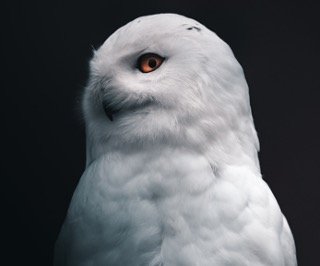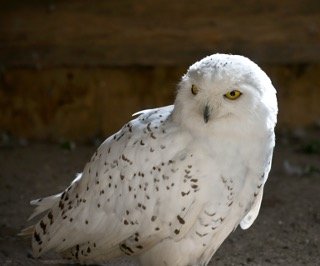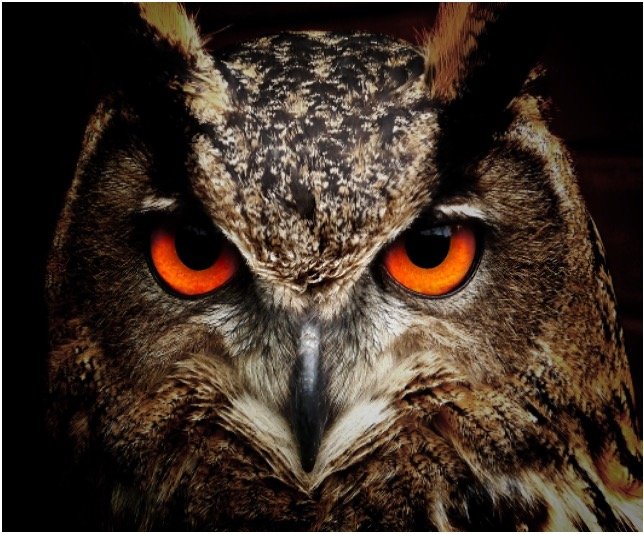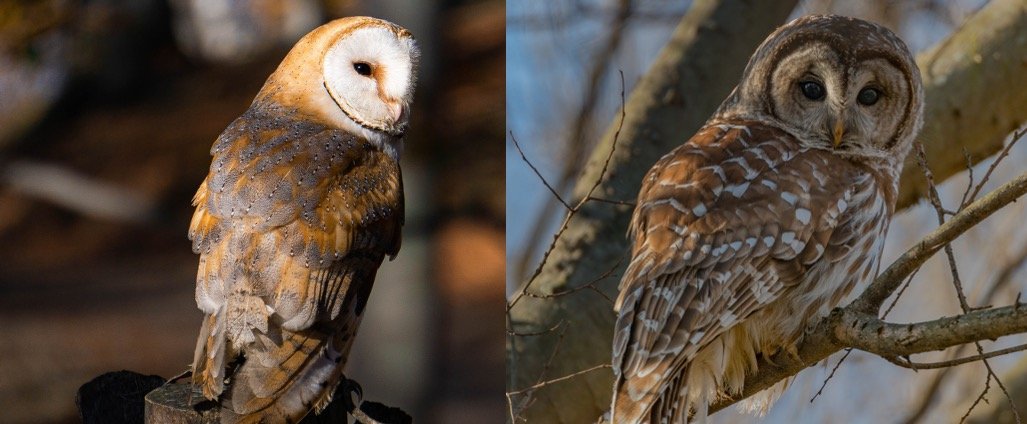
Barn vs Barred Owl
Owls are elusive, making it difficult to accurately identify them. This essay will compare the Barn and Barred Owls so that when the occasion arises, you will be able to recognize them with certainty.
This page will provide you tips on what to look for and hear for when presented with an ID situation, as well as a brief life history of each bird.
The Barn vs The Barred Owl
These two owls don’t have many apparent obvious resemblance, but misunderstanding is prevalent among those who are new to birding or inexperienced with the world of owls. Their names are identical, which might make it difficult to distinguish them accurately.
Looking at the images for each species below, you’ll notice that they’re actually fairly different and simple to distinguish apart. Let’s have a look at what distinguishes these birds.
(A) The Barn Owl
The barn owl is 12.6 to 15.8 inches in length, has a wingspan of 39.4 to 42 inches, and weighs 14.1 to 15.8 oz. The Barn Owl is known by a variety of names, including Ghost Owl, Demon Owl, Golden Owl, and Church Owl, to mention a few.
Tyto alba, the species name, means to “white owl.” Barn Owls are the sole members of their family in the United States.
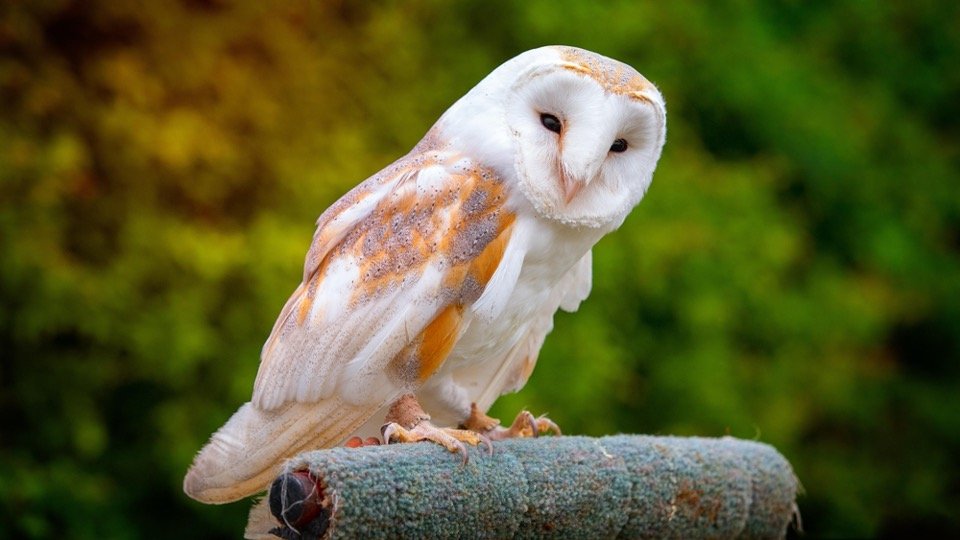
i. Habitat
These owls dwell in open settings with plenty of freedom to soar. They are not choosy and may be found in grasslands, deserts, marshes, agricultural fields, woodland strips, woodlots, ranchlands, brushy fields, and suburbs and cities. They like to nest in dark, quiet spaces, whether man-made, such as a barn, or natural.
Listen Barn Owl Hoot:
Credit: Manceau Lionel, XC659876. Accessible at www.xeno-canto.org/659876.
ii. Diet
They prefer to eat tiny animals. The most usual foods are mice, voles, lemmings, and rats, although they may also consume rabbits and bats. They have been observed storing several of these prey at the nest while incubating in order to feed their kids after they hatch.
iii. Range
Barn Owls may be found all year in the United States, although populations become less dense as you travel north.
iv. Identifying Markings
Although what some of their titles indicate, these owls are rather attractive. They have a golden pastel top and a delicate, heart-shaped face. Their eyes are black, and their bellies are dazzling white, giving them the appearance of ghosts.
Where Do Barn Owls Live? Best Hiding Spots!
(B) The Barred Owl
The barred owl measures 21 inches long, has a wingspan of 39 to 43.3 inches, and weighs 16.6 to 37 ounces. Barred Owls belong to the “real owl” family and the genus “wood owl.”
It was called from the streaking on its belly and was originally documented in 1799 by Benjamin Smith Barton.

i. Habitat
These owls like matured deciduous woods with mixed species as well as homogenous coniferous forests. They are particularly fond of swamps and other bodies of water.
Listen Barred Owl Hoot:
Credit: wisconagus, XC691476. Accessible at www.xeno-canto.org/691476.
ii. Diet
Food Small animals, birds, reptiles, amphibians, fish, and invertebrates make up the diet of barred owls. They would perch above the water, looking for fish and crawdads, and may even walk into shallow water to get them.
iii. Range
These birds may be found in the eastern United States, as well as in Canada’s boreal woods. Their range now includes Washington and Oregon. They live there all year.
iv. Identifying Markings
The back and wings of this big bird are speckled brown and white. Their whitish bellies are marked by dark lines that go downward from the neck. Their eyes are a deep black.
Where I Can Find Owls? Everything You Need To Know
7 Differences Between Barn and Barred Owls
1. The Voice of a Barn Owl is Screechy
Barn owls have a loud, screeching cry that is uncharacteristic of an owl. Barred owls have a higher “who-cooks-for-you” call that can be mistaken for a dog from afar.
2. Barn Owls in General are Paler
Aside from the fact that they both have dark eyes, they don’t resemble each other at all. Barn owls are much paler in contrast, with none of the black mottling and streaking that Barred owls have.
3. Barred Owls are Taller
Barn owls are about half a foot taller than barred owls. Surprisingly, their wingspans are similar.
4. Barred Owls Drop on Their Prey
Barred owls will perch and drop down on their prey, but barn owls would soar across fields to get their prey.
5. The Clutches of Barred Owls are Smaller
A barred owl’s clutch will only contain 1-5 offspring, but a Barn Owl’s clutch might have anything from 2 to 18 babies. A Barn Owl has a lifespan of around 5-7 years.
6. Broods are Fewer in Barred Owls
A Barred Owl will only have one brood every year, whereas a Barn Owl can have 1-3. They also might continue to reproduce all year.
7. Barn Owl Babies Stick Around for a Longer Time
Barn owlets will remain alongside their parents for 50-55 days. Nestlings of the barred owl only stay for 28-35 days.
After reviewing these birds, it’s clear that the only thing they have in common is their names. It’s possible for a non-birder to mix things up. This tutorial should have taught you something fresh about these owls.



